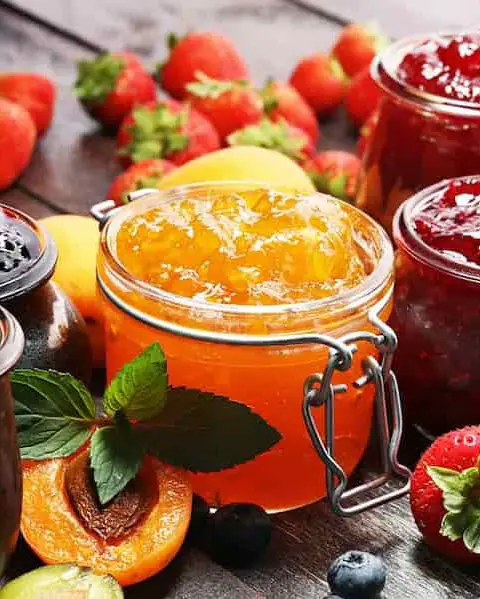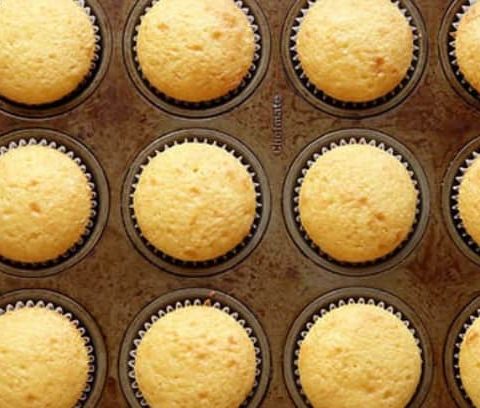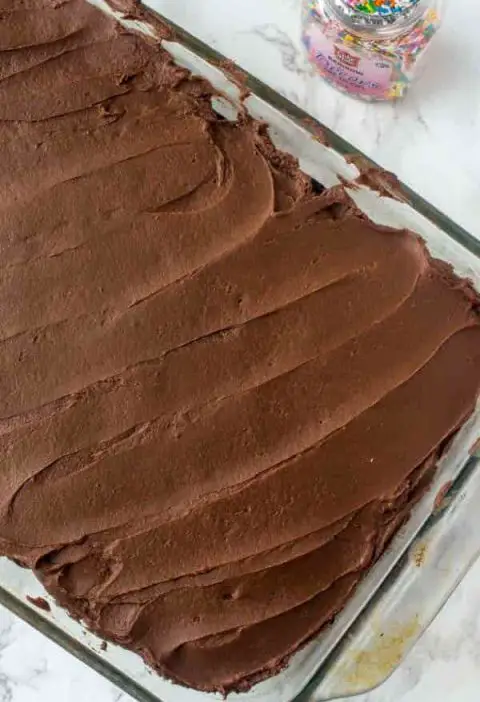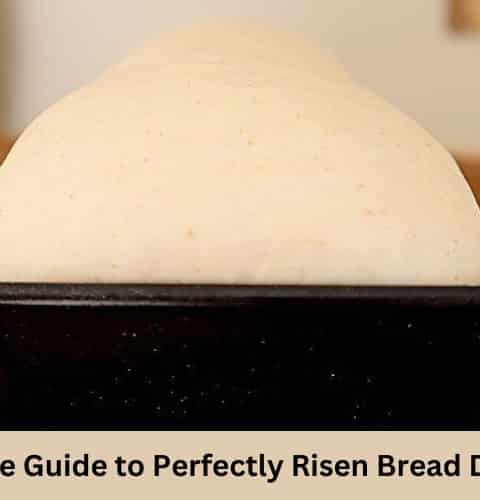Baking a cake is one of the most satisfying and rewarding activities you can do in the kitchen. Whether you want to make a simple sponge cake, a decadent chocolate cake, or a fancy layer cake, there are some basic principles and techniques that you need to master before you can achieve the perfect result.
In this article, I will share with you the basics of cake baking, from choosing the right ingredients and equipment to mixing, baking, and decorating your cake.
By following these tips and tricks, you will be able to bake delicious cakes that will impress your family and friends.
Choose the Right Ingredients
The first step to baking a great cake is to choose the right ingredients. The quality and freshness of your ingredients will affect the taste, texture, and appearance of your cake.
Here are some of the most common ingredients used in cake baking and how to choose them:
Flour:
Flour is the main ingredient in most cakes and it provides the structure and body of the cake. There are different types of flour that have different properties and uses. For example, all-purpose flour is versatile and can be used for most cakes, while cake flour is finer and lighter and produces a more tender crumb. You should always follow the recipe and use the type of flour that is specified. You should also measure your flour accurately using a scale or a measuring cup and spoon. Too much or too little flour can affect the consistency and texture of your batter.
Sugar:
Sugar is another essential ingredient in cake baking and it adds sweetness, flavor, and color to your cake. Sugar also helps to create air bubbles in the batter when it is creamed with butter or eggs, which makes the cake rise and become fluffy. There are different types of sugar that have different effects on your cake. For example, granulated sugar is the most common type of sugar and it dissolves easily in the batter, while brown sugar adds more moisture and caramel flavor to your cake. You should also measure your sugar accurately using a scale or a measuring cup and spoon. Too much or too little sugar can affect the sweetness and texture of your cake.
Butter:
Butter is another important ingredient in cake baking and it adds richness, flavor, and moisture to your cake. Butter also helps to create air bubbles in the batter when it is creamed with sugar or eggs, which makes the cake rise and become fluffy. You should always use unsalted butter for baking unless the recipe specifies otherwise. You should also use butter at room temperature, which means that it should be soft but not melted. This will help you to cream it easily with other ingredients and create a smooth batter. Too cold or too warm butter can affect the consistency and texture of your batter.
Eggs:
Eggs are another essential ingredient in cake baking and they provide moisture, structure, leavening, and binding to your cake. Eggs also help to create air bubbles in the batter when they are beaten with sugar or butter, which makes the cake rise and become fluffy. You should always use large eggs for baking unless the recipe specifies otherwise. You should also use eggs at room temperature, which means that they should not be cold or warm. This will help you to incorporate them easily into the batter and create a smooth emulsion. Too cold or too warm eggs can affect the consistency and texture of your batter.
Leavening agents:
Leavening agents are ingredients that help your cake rise by creating gas bubbles in the batter during baking. The most common leavening agents used in cake baking are baking powder and baking soda. Baking powder is a mixture of baking soda and an acid, such as cream of tartar or cornstarch, that reacts when it comes into contact with liquid. Baking soda is a base that reacts when it comes into contact with an acid, such as vinegar or lemon juice. You should always follow the recipe and use the type and amount of leavening agent that is specified. You should also check the expiration date of your leavening agent before using it, as it can lose its effectiveness over time. Too much or too little leavening agent can affect the rise and texture of your cake.
Liquid:
Liquid is another important ingredient in cake baking and it provides moisture, flavor, and tenderness to your cake. The most common liquid used in cake baking is milk, but you can also use water, juice, coffee, tea, or other beverages. You should always follow the recipe and use the type and amount of liquid that is specified. You should also use liquid at room temperature, which means that it should not be cold or warm. This will help you to mix it easily with other ingredients and create a smooth batter. Too much or too little liquid can affect the consistency and texture of your batter.
Choose the Right Equipment
The second step to baking a great cake is to choose the right equipment. The quality and suitability of your equipment will affect the ease, efficiency, and outcome of your cake baking. Here are some of the most common equipment used in cake baking and how to choose them:
Mixing bowls:
Mixing bowls are used to combine your ingredients and create your batter. You should have at least two mixing bowls, one for dry ingredients and one for wet ingredients. You should also choose mixing bowls that are large enough to hold your ingredients without spilling or overflowing. You should also choose mixing bowls that are made of stainless steel, glass, or ceramic, as they are durable, easy to clean and do not react with acidic ingredients.
Measuring cups and spoons:
Measuring cups and spoons are used to measure your ingredients accurately and precisely. You should have a set of measuring cups and spoons that are marked with standard units, such as cups, tablespoons, teaspoons, etc. You should also use different measuring cups and spoons for dry and wet ingredients. For dry ingredients, you should use measuring cups and spoons that are designed to scoop and level the ingredients. For wet ingredients, you should use measuring cups and spoons that are designed to pour and fill the ingredients.
Mixers:
Mixers are used to mix your ingredients and create your batter. You can use either a hand mixer or a stand mixer for cake baking. A hand mixer is a handheld device that has two beaters that rotate when you press a button. A stand mixer is a stationary device that has a bowl and a paddle, whisk, or hook attachment that rotates when you turn on a switch. A hand mixer is more portable, affordable, and easy to use, but it can be tiring and messy to hold for a long time. A stand mixer is more powerful, stable, and versatile, but it can be expensive, bulky, and hard to clean. You should choose the type of mixer that suits your preference, budget, and space.
Cake pans:
Cake pans are used to bake your batter and shape your cake. You should choose cake pans that are suitable for the type and size of cake you want to make. For example, if you want to make a round cake, you should use round cake pans; if you want to make a square cake, you should use square cake pans; if you want to make a loaf cake, you should use loaf pans; etc. You should also choose cake pans that are made of metal, such as aluminum or steel, as they conduct heat well and bake evenly. You should also choose cake pans that have straight sides and flat bottoms, as they create sharp edges and smooth surfaces for your cake.
Parchment paper:
Parchment paper is a paper-like material that is coated with silicone or wax to make it non-stick and heat-resistant. Parchment paper is used to line your cake pans before pouring your batter into them. This will help you prevent your cake from sticking to the pan and make it easier to remove it after baking. You should cut out parchment paper circles or squares that fit the bottom of your cake pans and place them inside the pans. You can also grease the sides of the pans with butter or cooking spray for extra non-stickiness.
Oven:
The oven is the device that heats up your batter and bakes your cake. You should preheat your oven before baking your cake, as this will help you to achieve the optimal temperature and time for your cake. You should also check the accuracy of your oven temperature using an oven thermometer, as some ovens may run hotter or colder than the dial indicates. You should also place your cake pans in the center of the oven rack for even heat distribution and avoid opening the oven door too often during baking, as this can cause heat loss and uneven baking.
Related: Try These Mary Berry Cakes Recipes
- Mary Berry Lemon Courgette Cake
- Mary Berry Coconut Cake Recipe
- Mary Berry Boiled Fruit Cake
- Mary Berry Blueberry Loaf Cake
- Mary Berry Mars Bar Cake
- Mary Berry Lemon Shortbread Biscuits
- Mary Berry Date and Banana Cake
- Mary Berry Red Velvet Cake
- Mary Berry Apple Cake
Mix Your Batter
The third step to baking a great cake is to mix your batter. The way you mix your batter will affect the texture and flavor of your cake. There are different methods of mixing batter depending on the type of cake you want to make.
Here are some of the most common methods of mixing batter and how to do them:
Creaming method:
The creaming method is used for butter-based cakes that have a light and fluffy texture. In this method, you cream together butter and sugar until they become pale and fluffy using a mixer. This will create air bubbles in the mixture that will help your cake rise during baking. Then you add eggs one at a time and beat well after each addition. This will create a smooth and emulsified batter. Then you sift in your dry ingredients, such as flour, baking powder, and salt, and fold them gently into the batter using a spatula or a wooden spoon. This will create a light and airy batter. You can also add other flavorings, such as vanilla extract, cocoa powder, or nuts, to your batter at this stage.
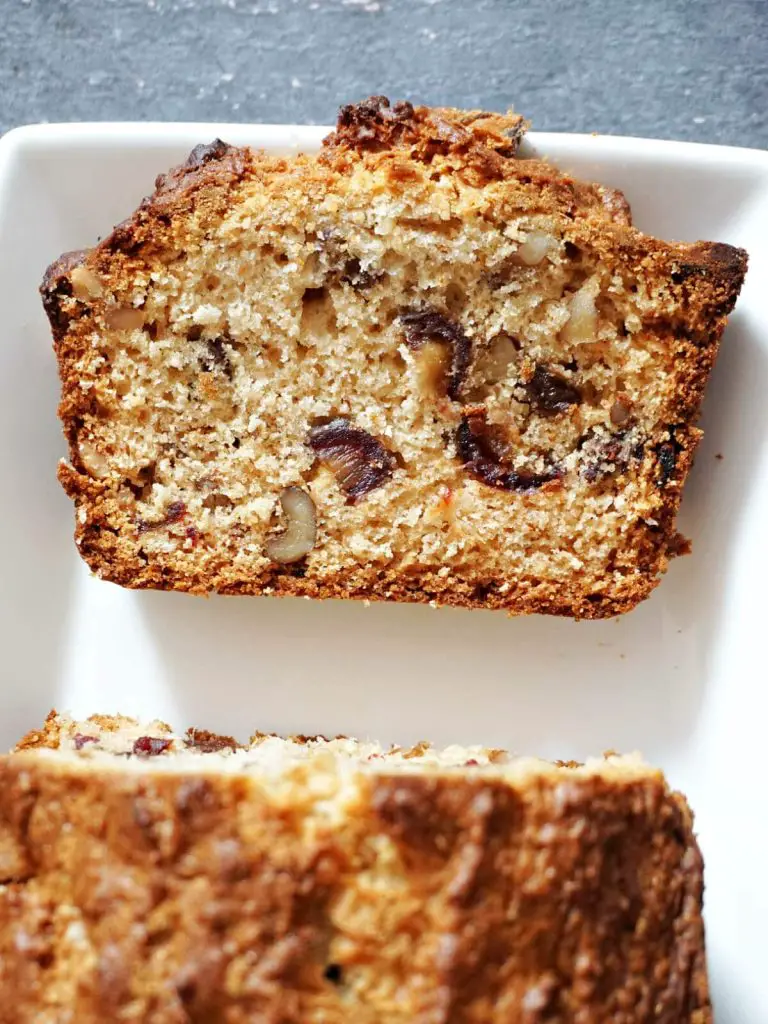
Whipping method:
The whipping method is used for sponge cakes that have a delicate and airy texture. In this method, you whip eggs and sugar together until they become thick and pale using a mixer. This will create air bubbles in the mixture that will help your cake rise during baking. Then you sift in your dry ingredients, such as flour, baking powder, and salt, and fold them gently into the mixture using a spatula or a wooden spoon. This will create a light and airy batter. You can also add other flavorings, such as vanilla extract, lemon zest, or chocolate chips, to your batter at this stage.
Muffin method:
The muffin method is used for quick breads and muffins that have a moist and dense texture. In this method, you whisk together your wet ingredients, such as eggs, milk, oil, and honey, in one bowl until they are well combined. Then you whisk together your dry ingredients, such as flour, baking powder, salt, and sugar, in another bowl until they are well mixed. Then you make a well in the center of the dry ingredients and pour the wet ingredients into it. Then you stir the ingredients together using a fork or a whisk until they are combined. You should not overmix the batter, as this will create tough and rubbery cakes. You can also add other flavorings, such as cinnamon, nutmeg, or blueberries, to your batter at this stage.
Bake Your Cake
The fourth step to baking a great cake is to bake your cake. The way you bake your cake will affect the appearance and doneness of your cake.

Here are some tips and tricks to bake your cake successfully:
Fill your cake pans:
You should fill your cake pans with your batter evenly and smoothly using a spatula or a spoon. You should not fill your cake pans more than two-thirds full, as this will prevent your cake from overflowing or sinking during baking. You should also tap your cake pans lightly on the counter to release any air bubbles in the batter.
Bake your cake:
You should bake your cake in the preheated oven according to the recipe instructions. You should check the doneness of your cake using a toothpick or a skewer inserted in the center of the cake. If it comes out clean or with a few crumbs attached, your cake is done. If it comes out wet or with batter attached, your cake is not done and needs more time. You should not overbake or underbake your cake, as this will affect the texture and flavor of your cake.
Cool your cake:
You should cool your cake in the pan on a wire rack for about 10 minutes before removing it from the pan. This will help your cake to shrink slightly from the sides of the pan and make it easier to remove it without breaking or cracking. You should then peel off the parchment paper from the bottom of the cake and invert it onto another wire rack to cool completely before frosting or decorating it.
Decorate Your Cake
The fifth and final step to baking a great cake is to decorate your cake. The way you decorate your cake will affect the presentation and appeal of your cake. There are many ways to decorate your cake depending on your preference, occasion, and skill level.
Here are some of the most common ways to decorate your cake and how to do them:
Frosting:
Frosting is a thick and creamy mixture that is spread over the top and sides of your cake to add flavor, color, and texture to your cake. There are different types of frosting that have different properties and uses. For example, buttercream frosting is made of butter and powdered sugar and it is soft and fluffy; cream cheese frosting is made of cream cheese and powdered sugar and it is tangy and smooth; ganache frosting is made of chocolate and cream and it is rich and glossy; etc. You should choose the type of frosting that suits your taste and style. You should also use an offset spatula or a knife to spread the frosting evenly over your cake.
Piping:
Piping is a technique that uses a piping bag fitted with a nozzle or tip to create shapes and patterns on your cake with frosting or whipped cream. There are different types of piping tips that have different shapes and sizes that can create different effects on your cake. For example, round tips can create dots and lines; star tips can create stars and rosettes; leaf tips can create leaves and petals; etc. You should choose the type of piping tip that suits your design and skill level. You should also fill your piping bag with frosting or whipped cream and squeeze it gently to create the desired shapes and patterns on your cake.
Sprinkles:
Sprinkles are small pieces of candy or sugar that are sprinkled over your cake to add color, sparkle, and crunch to your cake. There are different types of sprinkles that have different shapes and colors that can create different effects on your cake. For example, jimmies are long and thin sprinkles that come in various colors; nonpareils are tiny round sprinkles that come in various colors; sanding sugar is coarse sugar that comes in various colors; etc. You should choose the type of sprinkles that suits your theme and style. You should also sprinkle them over your cake generously and evenly before the frosting sets.
- Related: Tips to Improve Your Baking Skills
FAQs
How do I store my cake?
You can store your cake in an airtight container or a cake box at room temperature for up to 3 days or in the refrigerator for up to a week. You can also freeze your cake for up to 3 months by wrapping it tightly in plastic wrap and aluminum foil.
How do I cut my cake?
You can cut your cake using a sharp knife or a serrated knife. You should dip the knife in hot water and wipe it dry before each cut to create clean and smooth slices. You should also cut your cake from the center outward to avoid crumbling or squishing the cake.
Related: Hairy Bikers Cake Recipes
How do I make my cake moist?
You can make your cake moist by adding extra liquid, such as milk, yogurt, sour cream, or applesauce, to your batter. You can also brush your cake with simple syrup, which is a mixture of sugar and water boiled together, before frosting it.
How do I make my cake fluffy?
You can make your cake fluffy by using the right type of flour, such as cake flour or self-rising flour, which has less gluten and more leavening agents than all-purpose flour. You can also whip your eggs or egg whites until stiff peaks form and fold them into your batter gently to create more air bubbles in the batter.
How do I make my cake vegan?
You can make your cake vegan by substituting animal-based ingredients, such as butter, eggs, and milk, with plant-based alternatives, such as oil, flax seeds, and almond milk. You can also use vegan-friendly frosting, such as coconut cream or vegan buttercream, to decorate your cake.
Conclusion
Baking a cake is a fun and rewarding activity that can bring joy and satisfaction to you and your loved ones. By following the basics of cake baking, such as choosing the right ingredients and equipment, mixing your batter, baking your cake, and decorating your cake, you will be able to bake delicious cakes that will impress your family and friends. You can also experiment with different flavors, shapes, and designs to create your own unique and creative cakes. Happy baking!




